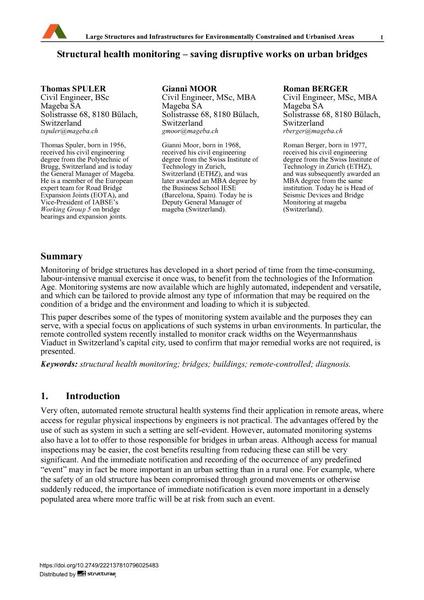Structural health monitoring – saving disruptive works on urban bridges

|
|
|||||||||||
Détails bibliographiques
| Auteur(s): |
Thomas Spuler
Gianni Moor Roman Berger |
||||
|---|---|---|---|---|---|
| Médium: | papier de conférence | ||||
| Langue(s): | anglais | ||||
| Conférence: | IABSE Symposium: Large Structures and Infrastructures for Environmentally Constrained and Urbanised Areas, Venice, Italy, 22-24 September 2010 | ||||
| Publié dans: | IABSE Symposium Venice 2010 | ||||
|
|||||
| Page(s): | 482-483 | ||||
| Nombre total de pages (du PDF): | 8 | ||||
| Année: | 2010 | ||||
| DOI: | 10.2749/222137810796025483 | ||||
| Abstrait: |
Monitoring of bridge structures has developed in a short period of time from the time-consuming, labour-intensive manual exercise it once was, to benefit from the technologies of the Information Age. Monitoring systems are now available which are highly automated, independent and versatile, and which can be tailored to provide almost any type of information that may be required on the condition of a bridge and the environment and loading to which it is subjected. This paper describes some of the types of monitoring system available and the purposes they can serve, with a special focus on applications of such systems in urban environments. In particular, the remote controlled system recently installed to monitor crack widths on the Weyermannshaus Viaduct in Switzerland’s capital city, used to confirm that major remedial works are not required, is presented. |
||||
| Mots-clé: |
ponts bâtiment
|
||||
